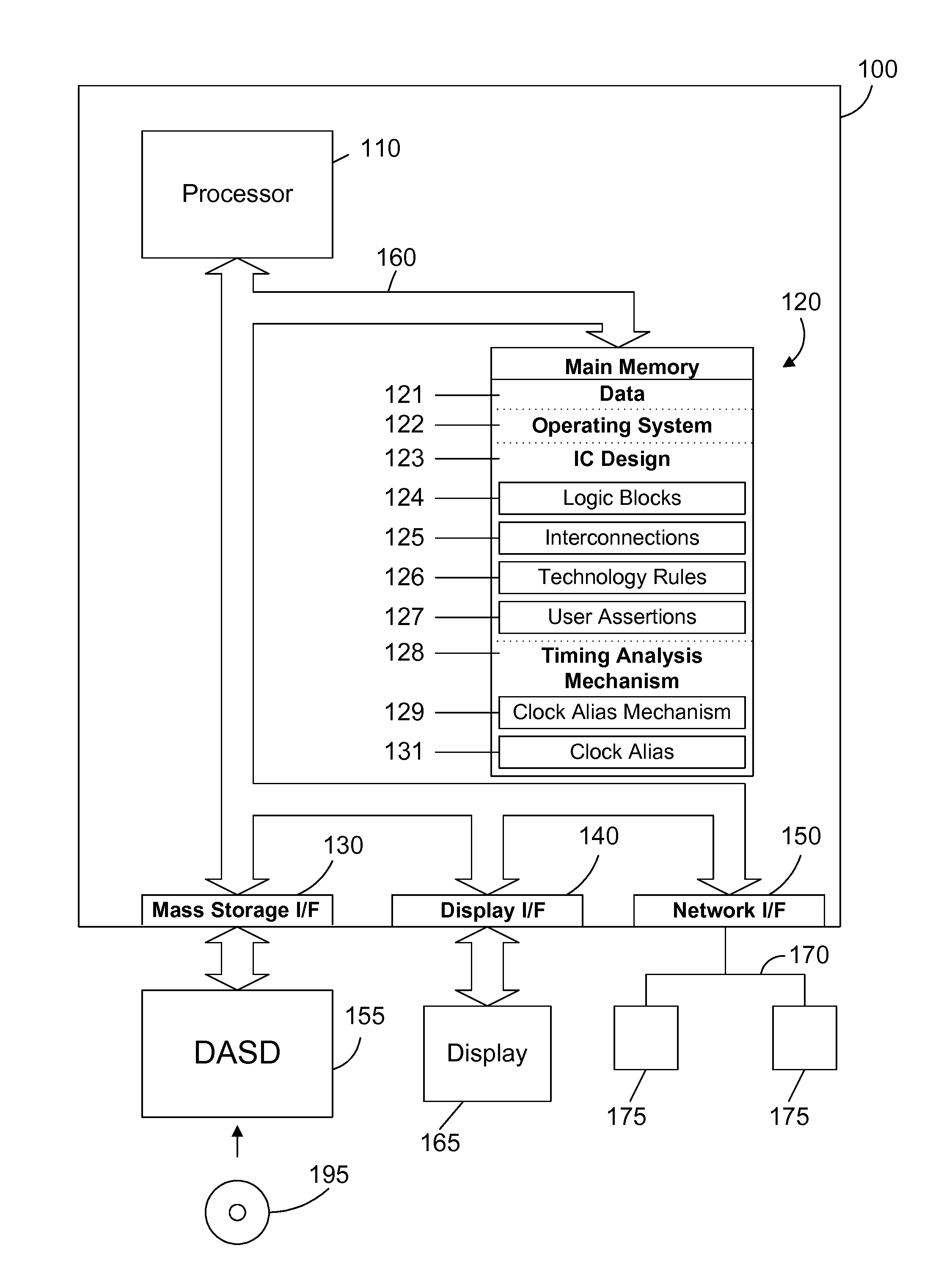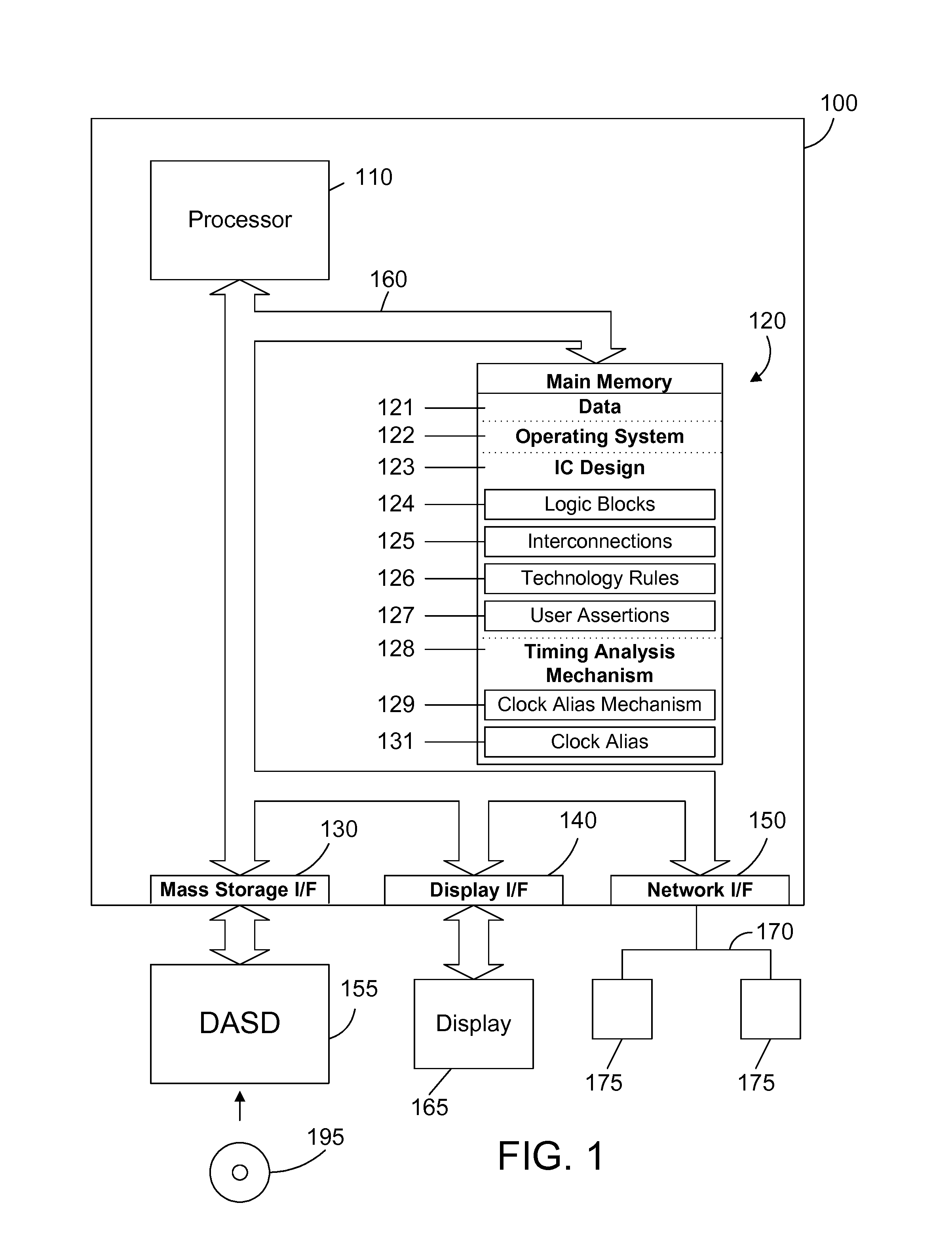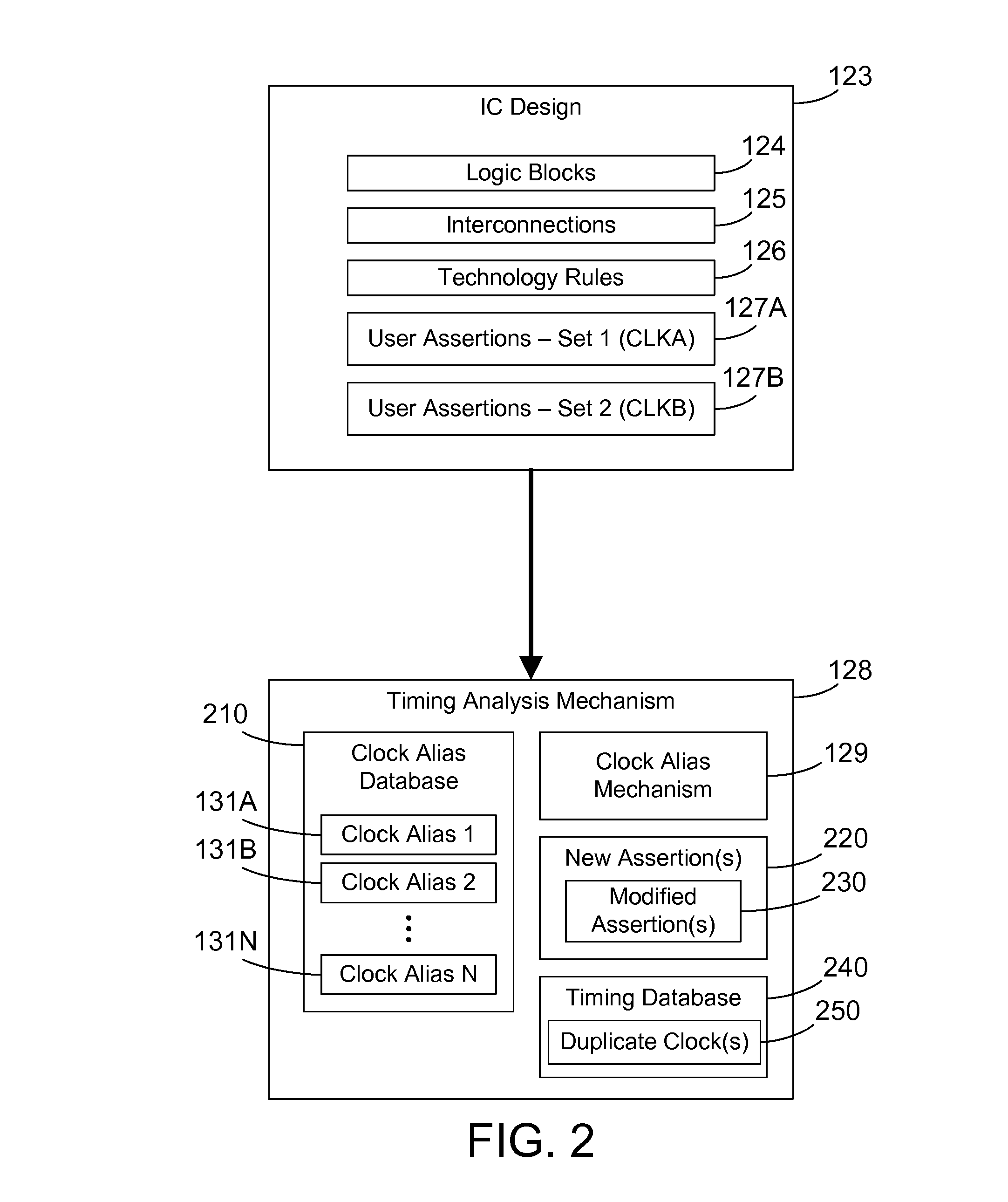Clock alias for timing analysis of an integrated circuit design
a timing analysis and integrated circuit technology, applied in the field of integrated circuit design timing analysis, can solve the problems of time-consuming and labor-intensive process for manually defining duplicate clocks that mimic other real clocks, and not being able to solve the problem of not being able to solve the problem of inability to accurately identify the time of the clock,
- Summary
- Abstract
- Description
- Claims
- Application Information
AI Technical Summary
Benefits of technology
Problems solved by technology
Method used
Image
Examples
Embodiment Construction
[0019]The claims and disclosure herein provide a timing analysis mechanism that allows defining one or more clock aliases. The need for a clock alias arises when a design includes different labels for what should be the same clock. This can happen, for example, when a logic block from a third party is incorporated into a design, and the assertions provided by the third party are in terms of clock labels in the logic block, which may have different clock names that the rest of the design. Clock aliases are used to define a clock in terms of a real clock in the system. In a first implementation, the clock alias causes a user assertion that references the clock alias to be modified to generate a new user assertion that refers instead to the real clock. The new user assertion is then processed. This allows the existing user assertions provided by the third party to be used without the designer having to manually rename the clock names in the existing user assertions and without generati...
PUM
 Login to View More
Login to View More Abstract
Description
Claims
Application Information
 Login to View More
Login to View More - R&D
- Intellectual Property
- Life Sciences
- Materials
- Tech Scout
- Unparalleled Data Quality
- Higher Quality Content
- 60% Fewer Hallucinations
Browse by: Latest US Patents, China's latest patents, Technical Efficacy Thesaurus, Application Domain, Technology Topic, Popular Technical Reports.
© 2025 PatSnap. All rights reserved.Legal|Privacy policy|Modern Slavery Act Transparency Statement|Sitemap|About US| Contact US: help@patsnap.com



